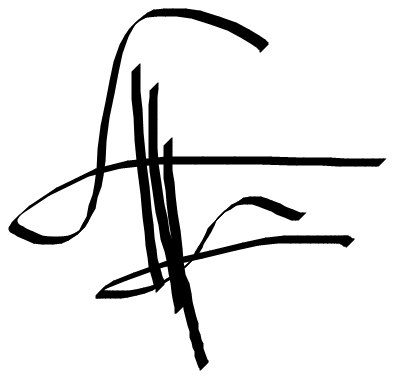Introduction
The keyword-rich education landscape increasingly favors innovative teaching methodologies. One standout approach is game-based learning, especially when merged with Problem-Based Learning (PBL) and Project-Based Learning (PjBL). This hybrid instructional design is particularly effective for Grade 3 students, who are transitioning from learning basic concepts to applying knowledge in real-life and playful situations.
In this comprehensive article, we will explore how game-based strategies can be integrated with PBL and PjBL to create a vibrant and effective learning environment. From lesson design to student engagement and classroom outcomes, we’ll guide you through a 360-degree view of this powerful teaching approach.
Understanding Game-Based Learning in the Classroom
Game-based learning (GBL) integrates the mechanics and design of games into educational experiences. Rather than playing games purely for fun, students engage with curriculum-based games that enhance their learning.
- Encourages student motivation and engagement
- Facilitates experiential and active learning
- Allows for immediate feedback and adaptive challenges
This strategy is especially effective for developing communication, critical thinking, and cooperation—skills that align well with 21st-century education.
What is Problem-Based Learning (PBL)?
Problem-Based Learning is a student-centered pedagogy where students learn by solving real-world problems. In this approach:
- Teachers act as facilitators, not lecturers
- Students work collaboratively to explore a complex question
- Inquiry, critical thinking, and self-directed learning are emphasized
PBL motivates learners to take ownership of their learning journey and apply academic knowledge to practical challenges.
What is Project-Based Learning (PjBL)?
While similar to PBL, Project-Based Learning emphasizes the creation of a product or presentation that reflects the students' understanding of a topic. Key features include:
- Long-term projects with multiple phases
- Real-world relevance
- Integration of various subject areas (math, science, language, art)
When implemented effectively, PjBL encourages creativity, accountability, and time management in students.
Why Use These Methods in Grade 3?
Third-grade students are at a crucial cognitive stage where they begin to understand abstract concepts and enjoy teamwork. By Grade 3, students are capable of:
- Identifying patterns and solving basic problems
- Expressing opinions and reasoning
- Collaborating in group settings
Integrating GBL with PBL and PjBL creates a robust structure for fostering these capabilities.
Classroom Scenario: Environmental Awareness Game
Let’s examine a practical classroom scenario that illustrates the combined use of these methods:
Title: "Eco-Quest: A Classroom Game for Reducing Waste"
Step 1: Problem Identification (PBL)
- Students are introduced to the problem: "Why do we generate so much classroom waste?"
- Game context: Teams are formed as "Eco-Hero Squads".
- Each team investigates causes and effects through guided missions.
Step 2: Research and Role Play
- Students role-play as school stakeholders (students, janitors, teachers, parents)
- They use cards and tokens to earn points for finding viable solutions
Step 3: Project Planning (PjBL)
- Based on game results, students collaboratively plan a real-world waste reduction project
- They design posters, build DIY recycling bins, and create a school campaign
Step 4: Implementation and Score Tracking
- Over two weeks, students implement their projects
- Game scoreboards track each team’s impact based on peer feedback and results
Step 5: Evaluation and Presentation
- Teams present their outcomes and earn final badges based on creativity, impact, and teamwork
- Teachers and peers provide constructive feedback using scorecards and rubrics
Assessment and Learning Outcomes
Using rubrics aligned with GBL, PBL, and PjBL, teachers can assess:
- Communication and active listening
- Teamwork and collaboration
- Creativity and innovation
- Problem-solving ability
- Project execution and time management
Student self-reflection, peer feedback, and game metrics all contribute to performance evaluation.
Teacher Tips for Effective Implementation
- Start Simple: Begin with short, low-prep games before scaling up
- Design Clear Rules: Structure games so that students understand objectives and scoring
- Use Technology Wisely: Platforms like Classcraft, Kahoot, or Minecraft Education can enhance learning
- Align With Curriculum: Ensure game challenges reflect learning standards
- Reward Collaboration: Emphasize team success over individual competition
Challenges and How to Overcome Them
While highly effective, these methods can present challenges:
- Preparation Time: Use templates or pre-built educational games
- Classroom Management: Assign team roles and rotate responsibilities
- Uneven Participation: Encourage inclusive design so all students can contribute
- Assessment Tracking: Combine traditional rubrics with game analytics
Conclusion
Game-Based Learning, when integrated with Problem-Based and Project-Based Learning, transforms the classroom into an interactive, student-driven environment. For Grade 3 students, this triple-method approach fosters essential skills in a fun and structured way.
By embracing these strategies, educators empower students to become not only learners but also active participants and leaders in their own education.

.jpg)
.jpg)
.jpg)
.jpg)







